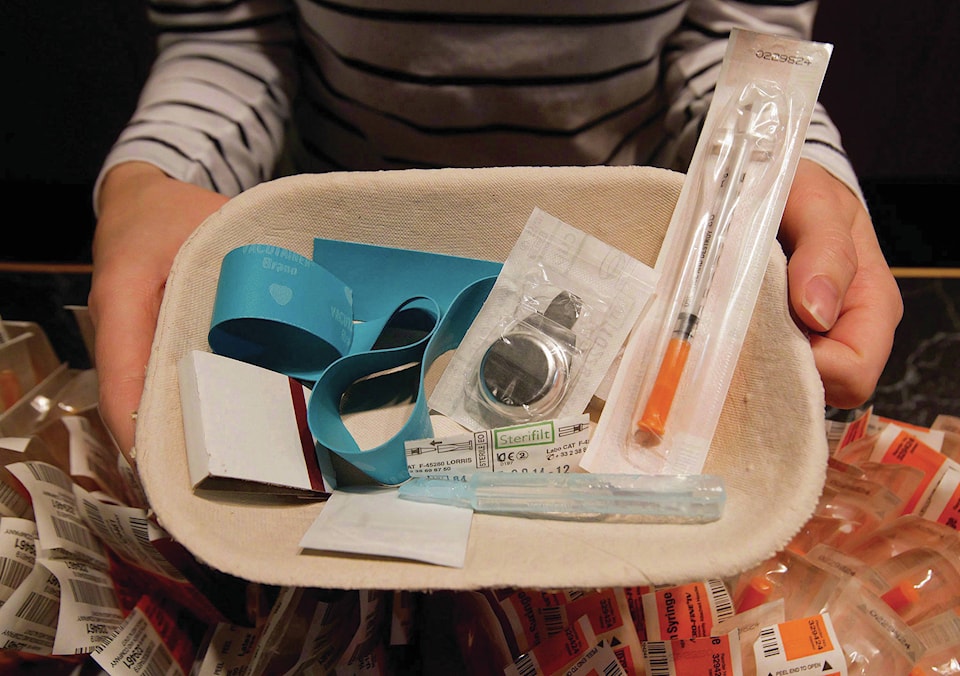A local member of an advocacy group fighting the opioid crisis says she was devastated by the results of a report on supervised drug consumption sites.
The report, commissioned by the Alberta government and released Thursday, says the social impacts of the sites in Alberta include increased needle debris and a growing risk to public safety in surrounding neighbourhoods.
A government-appointed panel put together the report by looking at how the sites impact crime rates, social order, property values and businesses. The panel was not asked to look at the benefits of harm reduction for site users.
Deborah Watson, central Alberta spokeswoman with Moms Stop the Harm, says the panel lacked representation from those working at the sites.
Facilities such as the overdose prevention site in Red Deer, which is operated by Turning Point, save lives, she added.
“It’s a real shame. I know so many kids who have died (due to overdose) and it’s unnecessary. They’re all preventable deaths,” Watson said.
The results of the report are “pretty well devastating to anybody who cares about everybody’s life.”
A Turning Point representative was unavailable for comment Thursday.
The review was led by former Edmonton police chief Rod Knecht. Other members included an economist, three doctors, a real-estate agent and the mother of a young man who died of an overdose.
The Opposition has criticized the panel as being stacked with advocates of an abstinence-only approach and for failing to include no one from supervised consumption services.
Mayor Tara Veer said she watched the press conference Thursday morning, but has yet to go through the full report.
“Council will review the report and so will Red Deer city operations. Then we’ll have a future discussion with the local MLAs and minister to hear more about the government’s thoughts and position in response to the report,” said Veer.
“Much of what we heard in the press conference today is consistent with the letters, emails, phone calls and social media messages that council has been receiving with respect to the local site.”
There are currently seven safe consumption sites in Alberta — in Edmonton, Calgary and Lethbridge — with proposals for one each in Red Deer and Medicine Hat and another one in Calgary.
Over the coming months, the government will consider changes to supervised consumption services and other addiction treatment and recovery resources.
Associate Health Minister Jason Luan called the report a “wake-up call” and says the government will use it to make decisions about the sites on a city-by-city basis.
“Every one of us deserves to feel safe in our communities, and every Albertan struggling with addiction should be able to access the supports they need,” said Luan.
“We will consider this report, and all other relevant evidence, as we develop a comprehensive, long-term approach that works. That means improving addiction treatment services and supports to create a full continuum of care across the province.”
Luan said the eight-member review panel heard allegations of “financial irregularities” at Arches, the non-profit agency overseeing the safe consumption site in Lethbridge.
He says auditors went to Arches this week to collect documentation and he’ll have more to say in the coming weeks.
More than 16,000 individuals and 440 businesses submitted feedback through an online survey and about 1,800 people attended town hall meetings in Red Deer, Edmonton, Calgary, Lethbridge and Grande Prairie.
– With files from The Canadian Press
sean.mcintosh@reddeeradvocate.com
Like us on Facebook and follow us on Twitter
